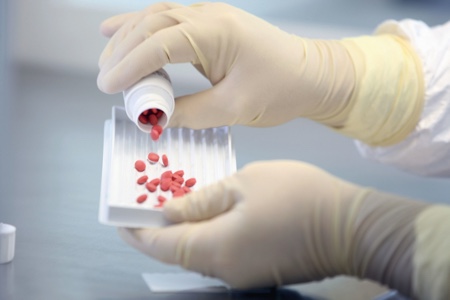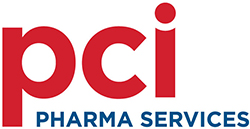Bringing new drug products from early discovery, through clinical trials and into commercialisation is a challenging, costly and time-consuming process. It involves multiple stakeholders within sponsor companies, contract service providers, regulatory authorities and, most important, the patients themselves. Legislation in the US has been present for many years concerning clinical supplies, which must be manufactured ‘to an appropriate level of current Good Manufacturing Practice’ (cGMP). However, the European Union (EU) clinical trial legislation is much more recent and specific with respect to manufacture, labelling, release, regulatory oversight, etc.
The EU Clinical Trials (CT) Directive 2001/20/EC was first published in April 2001 whereby it was to be made a legal requirement within EU member states from May 2004 onwards through the transposition of the Directive into the local EU countries’ legal framework (e.g. Statutory Instrument within the UK).
The main aims of the CT Directive were to provide a framework for protecting the rights, wellbeing and safety of participants involved in a clinical trial by ensuring that adequate regulatory provisions exist throughout the EU, that Good Clinical Practice (GCP) measures are introduced, GMP controls are in place and that there are sufficient inspection and enforcement powers across the EU with the concerned member states. This led to further updates through the introduction and update of certain directives and GMP guidelines, including:
- GMP – EU Directive 2003/94/EC
- GMP – EudraLex Vol IV GMP Guide and Annex 13
- GCP – EU Directive 2005/28/EC.
While the introduction of the CT Directive and accompanying directive/guideline updates have provided greater control not just over patient safety and wellbeing but also regulatory controls for manufacturers and release to EU CT sites, the CT Directive has not been a total success. Since its introduction from May 2004 onwards, a 25% decrease in the number of EU clinical trials has been observed, as a result of the CT Directive’s impact on non-commercial clinical trials. Also the ‘local transposition’ of the CT Directive into local EU member state law has allowed certain local country changes to take place, resulting in EU country variance with respect to the conduct of clinical trials. This can make conducting clinical trials in the EU costly, complex and challenging.
In July 2012, the EU Commission published a proposal on Regulation of the European Parliament and of the Council on clinical trials on medicinal products for human use, and repealing Directive 2001/20/EC.1 The intent of the proposal was to review the current provisions with a view to introducing a new Regulation on clinical trials and thus make obsolete the current CT Directive 2001/20/EC. Change was on the horizon.
New CT Regulation 536/2014
The new CT legislation, which was adopted on 16 April 2014 and entered into force on 16 June 2014, has taken the legal form of a Regulation. This will ensure that the rules for conducting clinical trials are identical throughout the EU because a Regulation has to be implemented exactly within each local EU Member State.
The CT Regulation 536/2014 addresses many areas. For the sake of comparison, the CT Directive consists of 24 Articles, whereas the new CT Regulation consists of 99 Articles and seven Annexes. Some of the main highlights are:
A streamlined application procedure via a single entry point, the EU portal.
Once the Regulation is effective, there will no longer be a need to submit individual Clinical Trial Applications (CTAs) to each individual EU member state for review and approval; CTAs will be submitted via the central EU portal.
A single set of documents to be prepared and submitted for the application defined in Annex I of the Regulation.
A single CTA will be submitted into the EU portal for review and approval as defined within the specified Annex 1 of the Regulation; the Regulation is much more detailed than the current CT Directive.
A harmonised procedure for the assessment of applications for clinical trials, which is divided into two parts. Part I is jointly assessed by all Member States concerned. Part II is assessed by each Member State concerned separately.
All applications and subsequent communications with the sponsor and other Member States will occur via the portal. One Member State will become the reporting Member State (RMS), proposed by the sponsor. The CTA is formally validated within 10 days by the RMS. Other Member States where the trial will occur are referred to as a concerned Member State (CMS).
Assessment of Part I occurs through the RMS and all CMS reviewing Part II in relation to their own national law. Part I review occurs within 45 days with the RMS posting its conclusions via the portal for review by the sponsor and other CMS. The Part II review must occur within 45 days of the validation date referred to above. The decision of the RMS will be the decision of all CMS unless there is a valid reason as per the Regulation.
Simplified reporting procedures which will spare sponsors from submitting broadly identical information separately to various bodies and different Member States.
Union controls in Member States and third countries to ensure that clinical trials rules are being properly supervised and enforced.
Clinical trials conducted outside the EU, but referred to in a clinical trial application within the EU, will have to comply with regulatory requirements that are at least equivalent to those applicable in the EU.
Although the Regulation was published in the Official Journal of the EU on 27 May 2014 and will eventually replace the current CT Directive 2001/20/EC, it is important to note that the Regulation will only come into force six months after the EU Commission publishes a notification. This will be no earlier than 28 May 2016 – which could then be delayed still further if central portals and corresponding databases are not available for use. Therefore, until further notice is received, the CT Directive 2001/20/EC is in force and must continue to be complied with for EU clinical trials.

Advances in technology should make processes simpler and improve compliance levels
While the main changes and highlights within the new Regulation have been documented previously herein and are widely welcomed to address the issues surrounding EU trial complexities and costs, it is worth highlighting some other changes that the Regulation will introduce and enforce that have raised concerns among some industry experts and regulators. Concerns relate mainly to late inclusions into the Regulation Annex VI which implies:
Expiry date has to be present on all inner and outer container labelling even in the case of small containers e.g. ampoules, blisters when they remain together.
Current GMP Guideline – Annex 13 permits, under certain conditions, the deliberate omission of expiry/retest dating from the inner IMP label if the information is suitably captured on the outer IMP carton label. This process has been suitably managed and controlled for a number of years; however, with the best of intentions, this late inclusion will cause issues in relation to:
- Increased handling of the IMP, especially if the IMP is cold chain, to extend shelf life possibly compromising quality and efficacy.
- Risk of error, breaking of tamper evidence as inevitably the inner label will require changing/over-labelling to update shelf life when extension of shelf life is required.
- Legibility; the need to try to comply with CT Regulation Annex VI could cause issues regarding legibility when space is already restricted.
- Wastage due to possible inability to extend shelf life, thereby compromising possible patient treatments and drug availability/costs.
Removal of use of electronically controlling (e.g. IVRS) certain particulars (e.g. expiry dates).
Advances in technology should make processes simpler and improve compliance levels. Current EU GMP Guidelines – Annex 13 does permit the exclusion of certain particulars if they can be controlled by suitable, qualified electronic systems (IVRS); more frequently of late, sponsor companies have been observed successfully integrating IVRS more fully into their supply chains whereby the systems were used to control expiry dating prior to IMP dosing to the patient. Under control within a suitably defined quality system, expiry dates omitted from IMP kits directly and IVRS controlling expiry dates was an advantage on a number of levels; however, the new CT Regulation Annex VI will no longer permit the absence of expiry dates (and certain other particulars) from inner or outer carton labelling.
Further changes on the horizon
Both the GCP and GMP Directive, to the extent that they concern investigational medicinal products, will be replaced by the new acts:2
- An Implementing Regulation on detailed arrangements for inspections procedures on GCP, including qualifications and training requirements for inspectors and;
- A Delegated Regulation on GMP rules for Investigational Medicinal Products.
In summary, both the GCP Directive 2005/28/EC and GMP Directive 2003/94/EC will either be replaced or updated respectively to accommodate the changes soon to be introduced via the new CT Regulation. It is worth re-enforcing, however, that until such time that the CT Regulation comes into force the ‘old’ CT Directive 2001/20/EC is still the Directive that must be complied with for clinical trials conducted in the EU.
Currently, whether managing activities associated with commercial or Investigational Medicinal Products (IMPs), the present arrangements of a common set of EU GMP guidelines (EudraLex Vol IV Part 1) and accompanying Annexes (e.g. Annex 13 for IMPs) serve the industry well and provide clarity which is underpinned by the main GMP Directive 2003/94/EC. With the imminent delegated regulation of GMP rules for IMPs this will essentially create a two-tier GMP hierarchy for IMPs and commercial medicinal products, thereby introducing further complexity and opportunity for misalignment over certain quality systems that would be common no matter what part of the development lifecycle.
The new CT Regulation is very much a positive and welcome change within the EU to simplify the application and authorisation procedures. However, within an ever-changing regulatory landscape, increased ‘layering’ within the GMP guidelines by splitting commercial products and IMPs could cause confusion within the industry. Furthermore, the late inclusions in the CT Regulation have created higher risks with the expiry labelling issue on inner, small containers and a backwards step with regards to moving away from technology, whereby, if controlled satisfactorily, it could actually enhance quality and risk reduction.
References
1. http://ec.europa.eu/health/files/clinicaltrials/2012_07/proposal/2012_07_proposal_en.pdf
2. http://ec.europa.eu/health/human-use/clinical-trials/regulation/index_en.htm





